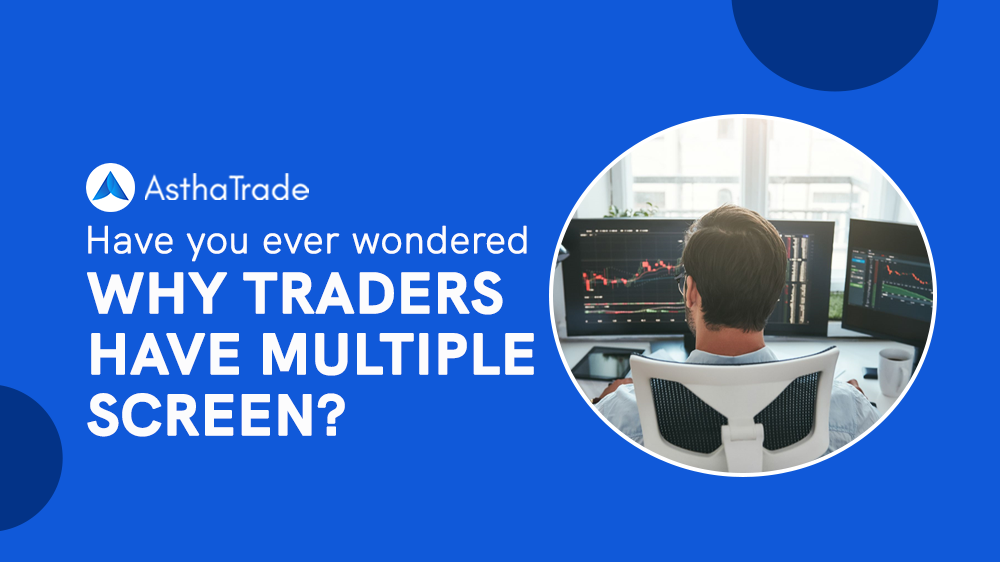Have You Ever Wondered Why Traders Use Multiple Screens?
You must have seen pictures of traders in India sitting in front of 4 to 9 screens with different charts and triggers and trading.
That is quite a view, I must say. It feels like something is happening, and you get that adrenaline rush.
But have you ever wondered why traders in India require so many screens? No, right? This article will get a sneak peek into a trader’s life.
How many screens do traders use?
An amateur trader in India may have screens ranging from 4 to 6, and a famous trader may have as many as 9 to 10. Yes, you heard it right.
A famous trader can handle as many as nine screens, which helps them keep track of them simultaneously. But, can they see all the screens at the same time?
The answer is No. However, they have good peripheral vision, which allows them to catch the trigger when something abnormal happens on the screen.
Now, let’s understand why traders require so many screens:
Famous traders run trades in several markets and securities simultaneously. All the trades are based on charts and factors that can affect the stock price in a particular direction.
Say, suppose a trader has bought Crude oil Futures, then there will be a screen running the current news and charts that may affect the global crude price movement. You can’t place a trade and leave it like that.
There are several technical charts, sentiment indicators, order flow books, different time frame analysis and other factors that a trader follows to have a successful trade.
Factors you need to see for a successful trade?
There are few checks and studies that an expert trader does to implement a successful trade.
Technical Chart
Technical chart analysis is the study of the price movement of a security. Several indicators in the technical chart help a trader determine whether the stock will rise or fall.
So when you see so many screens, few screens will show live technical chart indicators of the predictable stock price movement.
Sentiment Index
You may be good at stock research, but you need to focus on the short term when you are trading. It may be that a stock has good financials but still falling in the short term.
So for a trader, short-term movements are more important than long-term prospects.
The sentiment index helps traders understand whether the market sentiment is bearish or bullish on a stock.
Order Flow Trading
Order Flow Trading is the study of the order book to predict the stock price. When traders place different orders, it gets recorded in the Order book.
By analysing the order flow in the order book, you can predict the stock price movement.
If bulk buy orders are pending in the order book, the stock price should react positively and rise.
Different time frame analysis
This is the process of analysing assets’ pricing under different time frames.
The time frame to establish trends for the longer term is more significant, while to decide when to enter the market or understand spot deals, a shorter time frame is used.
So different time frame analysis helps in identifying trends and decisions.
Conclusion
Traders sitting in front of so many screens may seem fancy, but they all serve a purpose.
Traders usually combine signals from several indicators and make instantaneous decisions.
The job of a trader is nerve-racking. One bad trade can wipe out entire funds in minutes.
So if you are planning to be an expert in trading, learn and carry out your research first.

